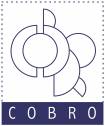ConceptNameSpace Interface Documentation
Generated from CoBro image file on August 20, 2009 – 11:23:43 am
Index
allCategories
Returns a collection containing all concepts that are a subconcept of Concepts.Category. A category concept provides a grouping mechanism to manage large sets of concepts. You can declare membership to a category by using the declaredMember relationship. You can also provide an intensional description (a Smalltalk block) which computes membership with the computedMember relationship.
allCategorylessConcepts
Returns a collection containing all concepts that are not listed as declared members of a category. Note that computed members of existing categories are not considered. Thus concepts that are not declared members of any category, but that are computed members of a category will also be returned.
allConceptNames
Returns a collection containing all the concept names that are in the concept namespace. A concept name is represented as a qualified reference (e.g., #{MyConcept}).
allConcepts
Returns a collection containing all the concepts that are in the concept namespace.
allConceptSpaces
Returns all existing concept namespaces. In the default installation of CoBro it returns the Concepts namespace.
allRelationships
Returns a collection containing all the relationships that are in the concept namespace (i.e., all concepts that are a subconcept of Concepts).
at:put:
Registers a concept with as key its concept name in the ConceptNameSpace. Typically you should not use this method directly.
containsConcept:
Verifies the existence of a particular concept in the concept namespace
containsConceptNamed:
Verifies the existence of a particular concept (by name) in the concept namespace
containsConcepts:
Verifies the existence of a collection of concepts in the concept namespace
containsConceptsNamed:
Verifies the existence of a collection of concepts (by name) in the concept namespace
countReferencesToEachConcept
Returns a collection containing the number of references per concept in the form of #(#(aConcept aNumber) …).
countUsageOfEachRelationship
Returns a collection containing the number of times a relationship is used in the form of #(#(aRelationship aNumber) …).
defineCategory:
Defines a category in the concept namespace with the provided concept name (i.e. it creates a concept with Concepts.Category in its superconcept chain). A category concept can be used to group concepts with the declaredMember or computedMember relationships.
defineCategory:displayName:
Defines a category in the concept namespace with the provided concept name and display name (i.e. it creates a concept with Concepts.Category in its superconcept chain). A category concept can be used to group concepts with the declaredMember or computedMember relationships.
defineConcept:
Defines a concept in the concept namespace with the provided concept name. A default value will be used for its display name, and superconcept (i.e. Concepts.AbstractEntity).
defineConcept:displayName:superconcept:
Defines a concept in the concept namespace with the provided concept name, display name, and superconcept.
defineConcept:displayName:superconcept:category:
Defines a concept in the concept namespace with the provided concept name, display name, and superconcept. it also adds the concept as a declaredMember of the provided category concept.
defineConcept:superconcept:
Defines a concept in the concept namespace with the provided concept name, and superconcept. A default value will be used for its display name.
defineTransientConcept:displayName:superconcept:
Returns a transient concept, which is not stored in the concept namespace. This is useful for temporary concepts that are not intended to remain after a computation is finished. Note that it is not allowed to relate a concept to a transient concept since its conceptName is not verified.
dumpBootstrappedDefinitions
Creates bootstrapped smalltalk templates for defining all concepts in the Concepts namespace. The full dump is opened in an object inspector.
dumpDefinitions
Creates smalltalk templates for defining all concepts in the Concepts namespace. The full dump is opened in an object inspector.
dumpHierarchyAsGraphviz
Creates a Graphviz file (gvConceptHierarchy.dot) which contains the concept hierarchy of the Concepts namespace. The file can be visualised as a graph by using the Graphviz software (http://www.graphviz.org/).
dumpReferrersAsGraphviz
Creates a Graphviz file (gvConceptReferrers.dot) which contains a reference graph (which concept points to which concept) of the Concepts namespace. The file can be visualised as a graph by using the Graphviz software (http://www.graphviz.org/).
dumpUsersAsGraphviz
Creates a Graphviz file (gvConceptUsers.dot) which contains a relationship usage graph (which concepts have which relationship in their definition) of the Concepts namespace. The file can be visualised as a graph by using the Graphviz software (http://www.graphviz.org/).
inspect
Opens a concept browser on the entire concept namespace.
isNameAvailable:
Returns true or false according to whether a concept name is already in use.
referringTo:
Returns a collection containing all the concepts that refer to aConcept using an arbitrary relationship.
referringTo:using:
Returns a collection containing all the concepts that refer to aConcept using a particular relationship.
referringToStringPattern:
Returns a collection containing all the concepts that refer to a string pattern using an arbitrary relationship. Wildcards are '*' for arbitrary number of characters and '#' for exactly one character. This is useful for example if you want to figure out which concepts refer to a particular string in their comment slot.
remove:
Deletes the concept in the concept namespace. A test is performed to see if there are any dangling references to it in which case it shows a dialog to inform the developer. Use the removeSilently: counterpart if you want to bypass this test and automatically remove all references.
removeSilently:
Deletes the concept in the concept namespace. A test is performed to see if there are any dangling references to it which are automatically removed. Use the remove: counterpart if you want to remove concepts interactively.
search
Opens a search window that allows you to query the concept namespace.
suggestNameBasedOn:
Suggests a unique concept name based on the provided name by adding numbers to it
trippyInspect
Opens a Smalltalk trippy inspector on the concept namespace.
using:
Returns a collection containing all the concepts that use a particular relationship in their definition.
